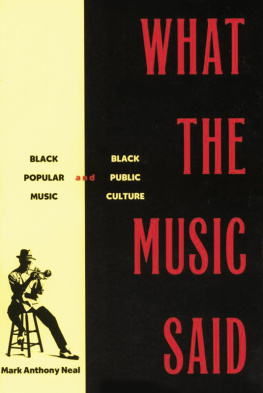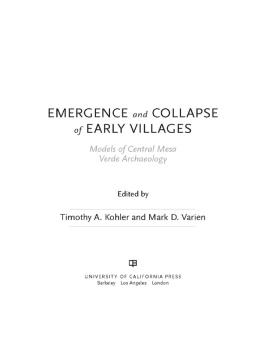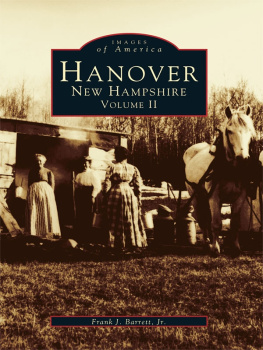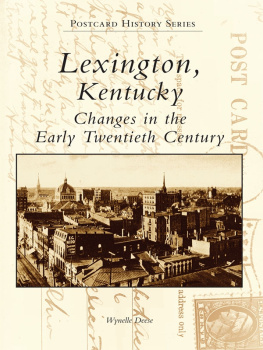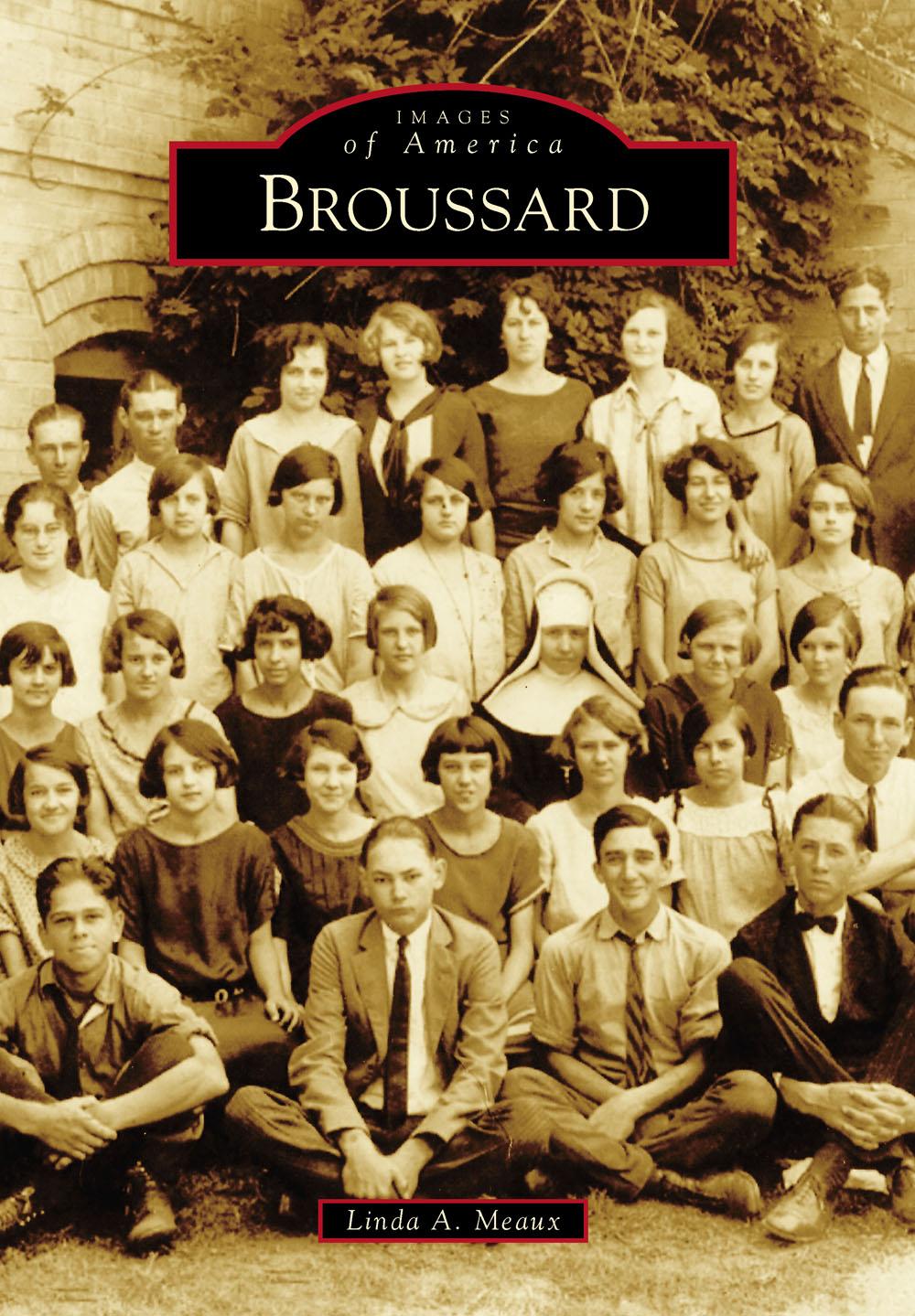
IMAGES
of America
BROUSSARD

From the time Pierre Jean Billeaud (18061877) emigrated from France to Louisiana in 1870, the Billeaud name has been synonymous with the familys contributions to the sugar industry. (Charles Chuck Billeaud.)
ON THE COVER: St. Cecilia High School graduates of 1925 are pictured here with their teachers, nuns from the Order of Divine Providence that hailed from San Antonio, Texas. For 65 years, these sisters were responsible for supervising, guiding, and directing the pupils through a faith-based curriculum. More information can be found in , Public and Private Schools Emerge. (Lafayette Parish Clerk of Court Louis J. Perret.)
IMAGES
of America
BROUSSARD
Linda A. Meaux

Copyright 2015 by Linda A. Meaux
ISBN 978-1-4671-1501-8
Ebook ISBN 9781439655467
Published by Arcadia Publishing
Charleston, South Carolina
Library of Congress Control Number: 2015945415
For all general information, please contact Arcadia Publishing:
Telephone 843-853-2070
Fax 843-853-0044
E-mail
For customer service and orders:
Toll-Free 1-888-313-2665
Visit us on the Internet at www.arcadiapublishing.com
Claire Bernard Bonin lived a century of life filled with faith, family, and community, and gladly shared her vast wisdom and knowledge.
CONTENTS
ACKNOWLEDGMENTS
My vision began 16 years ago after reading A Brief History of Broussard, compiled in 1984 by J. Harold Hollier. Having amassed many tidbits of knowledge about Broussards past through my husbands family connections to the community, I wanted to write a more in-depth history of the quaint village once known as Cte Gele.
I sought to birth a visual panorama interspersed with eloquent speech to more fully understand the Acadie exiles, especially brothers Joseph Beausoleil and Alexandre Broussards trials and tribulations when fighting against British troops and their ultimate emigration to Cte Gele to settle the Acadians in a lush and fertile land. Moreover, I wished to learn what part Valsain Valsin Broussard played in the town growth of Broussard.
The Broussard Historical Society (BHS) proposed in 1982 to establish three historic districts District A encompasses buildings and sites of local, state, or national historical significance in the Cte Gele area, which is the town center; District B includes buildings and sites of local, state, or national historical significance located in the original incorporated area of the municipality extending the length of Main Street and a depth of two blocks on either side of this principal thoroughfare; and District C, which is an additional area of the original incorporation located northeast of District B. By 1998, the BHS was no longer active. Thanks go to Maxine Duhon for her continuing efforts towards that goal.
In addition, I would like to thank Robert Bobby St. Julien, retired educator and history buff, for facts rounding out the visual story. To Henry Langlinais and his sister Doris Larriviere, Ralph Racca and Sarah Guidry Racca, and James Gondron that shared daily workings on a dairy farm, thanks. In addition, Fr. Arockiam Arockiam, SVD, shared tidbits from St. Joseph Church parish history. Thanks also go to Broussard city councilwoman Gertrude N. Batiste for the calls and interviews conducted in identifying photographs.
Foremost, thanks go to Jennifer Armentor, whose technical skills and attention to detail kept the project running smoothly and on track. Mayor Charles E. Langlinais and the Broussard City Council lead the charge as Broussard enters the next century of growth and prosperity while keeping alive the spirit of our Acadian heritage.
INTRODUCTION
The city of Broussard, Louisiana, is located off Highway 90, a major transportation artery through the Gulf Coast. In addition, it is in two parishes, Lafayette and St. Martin, which is one of 22 parishes recognized on June 6, 1971, by the Louisiana State Legislature along with other parishes of similar cultural environments, as the Heart of Acadiana.
Broussard lies on a floodplain of one of the old meandering courses of the Mississippi River. The towns roots sprouted in 1765, a gift from Joseph Beausoleil Broussard, exiled sharpshooter and guerrilla fighter, and his followers, creating a wonderful legacy for generations to come with joie de vivre, food, music, culture, and arts. Its Francophone population of 9,382 oozes with Southern hospitality and charm, combining growth opportunities with cutting-edge 21st-century technology. In the year 2010, Broussard gained national recognition for its rapidly growing commercial expansions.
The State of Louisiana announced plans in 2014 to widen and construct a two-mile segment of I-49 South from north of Ambassador Caffery Parkway to Albertsons Parkway, the two main major arteries for commercial and residential building in the area. Work has begun on the project, and when completed, the entire section of infrastructure will have six lanes with frontage roads stretching to the neighboring Iberia Parish line.
Broussard, Louisiana, is the only city in Louisiana that does not have city property taxes, making it a great place to build, live, work, and play. Mayor Charles E. Langlinaiss $17-million recreational project, St. Julien Park, will be located next to substantial acreage that will draw interest to restaurants, hotels, and retail businesses.
Set on a backdrop of 125-plus acres of rugged landscape, St. Julien Park took a substantial design effort to incorporate the rolling terrain into the final design plans. Phase 1 is underway and will offer a chance for youth and adults alike to play together in a state-of-the-art facility with the most up-to-date and safe equipment. It is likely that St. Julien Park will become a regional draw for competitive sports teams and their families. Patrick St. Julien lives across the road from the St. Julien Park, named after distant relatives, and he looks forward to watching his grandchildren play on the soccer and baseball fields. The Broussard brothers, Joseph Beausoleil and Alexandre, would be very proud to see how prosperous the once frozen hills of Cte Gele have become.
The book would not be complete without mentioning the New Acadia Project (NAP) grassroots undertaking, a multidisciplinary, historical, and ethnographic initiative to fill a 10-year gap in history. NAP is based out of Louisiana Public Archeology Laboratories and is a cooperative between the University of Louisiana at Lafayette and NAP Steering Committee, headed by Mark A. Rees, PhD. Their goal is to locate some 64 Acadie graves they believe could be in the Jeanerette area near Fausse Point. Now, 250 years later, there is the possibility of finding the graves of Acadie migrs Beausoleil, his brother, Alexandre, and other settlers who succumbed to yellow fever shortly after settling along the Teche Ridge in 1765.
This contribution to the Images of America series pays tribute to the spirit of the Acadians. However, despite Joseph Beausoleil Broussards wits and skills, the Acadian resistance to the British failed. Through Beausoleils exploits, his group of fighters held back the British along the Petitcodiac River until 1768. The British cleared Acadie, leaving the lush and fertile land bare. Beausoleil Broussard, Alexandre Broussard, Jean Basque, and Simon Martin delivered a petition to the British at Fort Cumberland on November 16, 1759, relinquishing the fight rather than face the prospect of starvation. Jean Basque and Michel Bourg led another group of starving Acadians to the fort a few days later. The Acadians that were sent to Halifax were freed in 1763 when the hostilities ended. After the Treaty of Paris, about 1,700 prisoners chose to remain in Nova Scotia.
Next page

